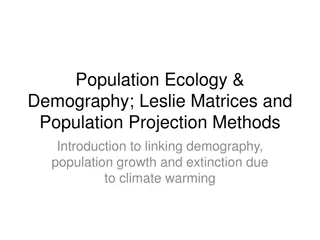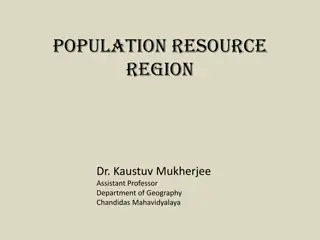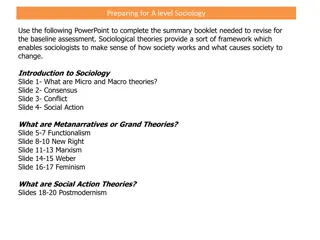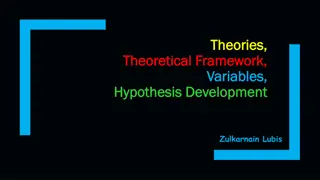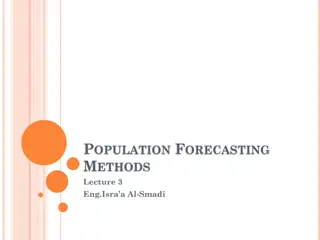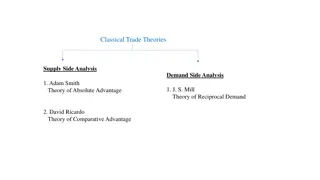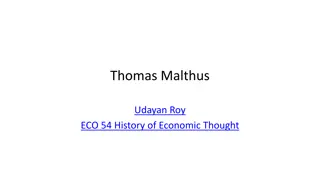Understanding Population Policies and Their Impact on Growth Theories
Explore the various government policies - Expansive, Eugenic, and Restrictive - that influence population growth. Discover how these policies encourage or limit natural increase, such as promoting large families or imposing birth control measures. Learn about historical examples like China's one-child policy and Nazi Germany's eugenic policies. Understand the roles of governments in shaping population dynamics and the implications of different approaches on societal development.
- Population policies
- Government influence
- Population growth theories
- Restrictive policies
- Eugenic practices
Download Presentation

Please find below an Image/Link to download the presentation.
The content on the website is provided AS IS for your information and personal use only. It may not be sold, licensed, or shared on other websites without obtaining consent from the author. Download presentation by click this link. If you encounter any issues during the download, it is possible that the publisher has removed the file from their server.
E N D
Presentation Transcript
UNIT 2 LESSON POPULATION POLICIES
STUDENT WILL BE ABLE TO Analyze the merits of population growth theories Articulate the role of government policies with regards to population growth
GOVERNMENT POLICIES Three Types: 1) Expansive 2) Eugenic 3) Restrictive Government can influence through behaviors
EXPANSIVE POLICIES Expansive Population Policies: encourage large families and raise the rate of natural increase (Foulberg, 2012, p. 73 Example: Mother Heroine medal in Soviet Union, given for raising more than 10 kids. Russian version is the Order of Parental Glory which is seven children.
RESTRICTIVE POPULATION POLICIES Restrictive Population policies: reduce the rate of natural increase . Birth Control Prohibition of large families China 1 child policy Still so-so existence, but has been adapted to help address the high rate infanticide of females India had forced sterilization Election to offices required 2 or less children
EUGENIC POPULATION POLICIES Eugenic population policies: favor one racial or cultural sector of the population over others. Nazi Germany is the most famous historical example Can be practiced covertly Resource allocation Cryptic laws (such as race laws for marriage)
STATE POLICIES ARE LIMITED Not uncommon for a religion to focus on expansionist policies In Contrast states might focus on constricting policies Economic factors will motivate growth in developed nations
EUROPEAN NATIONS Many have sought to encourage higher birth rates Sweden has VERY generous maternity leave Finland (Baby in a Box!!)
THOMAS MALTHUS I m a British Economist & Cleric. I was born in 1766-1834, which is only important to let you know I lived during England s transition through Stage 2 of the Demographic Transition Model. I said that population growth would out strip food production. Here s why ..
MALTHUS ARGUES THAT POPULATION INCREASED GEOMETRICALLY (1,2,4,8) WHEREAS FOOD SUPPLY INCREASED ARITHMETICALLY (1,2,3,4).
Malthus Thesis: 1) Means of subsistence (no food die) 2) Population will increase with increase in the means of subsistence (lots of food more babies) 3) Checks that will inhibit the productive capacity of population are private (choose moral restraint such as celibacy & chastity) or destructive (war, poverty, pestilence, and famine).
NEO-MALTHUSIANS Malthus predications did not come true The population continued to increase Malthus then faded away until 1950 s Neo-Malthusians have similar/same beliefs regarding population It s still rising Strongly advocate for population control i.e.; birth control Different from Malthus in that Malthus focused on moral restraint
ESTER BOSERUP I m the only well-known female theorist you will encounter in Human Geography. I died in 1999 and was born in Denmark. I m not in your textbook either. I m an economist and I really didn t agree with Malthus or Neo-Malthusians. because


